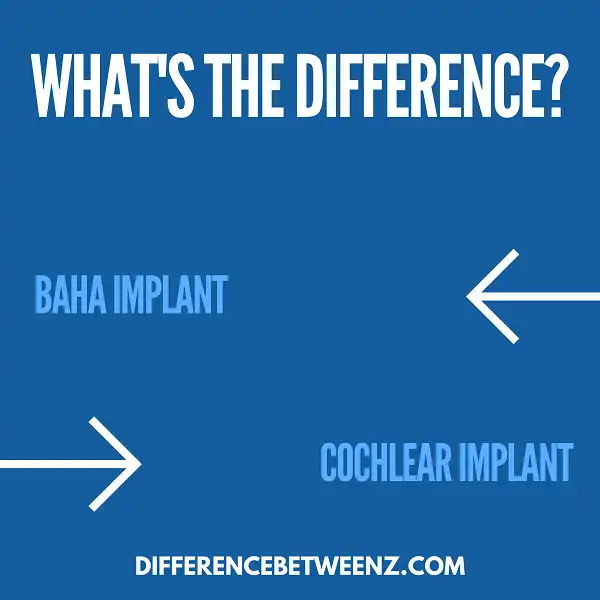What is the difference between a BAHA and a Cochlear Implant? Both are hearing devices, but what are their specific benefits and functions? This post will explore the differences between these two types of hearing devices, and help you decide which might be best for you or your loved one.
What is BAHA Implant?
BAHA implants are hearing devices that are surgically placed under the skin behind the ear. The BAHA implant delivers sound to the inner ear, or cochlea, bypassing the damaged outer ear and middle ear.
This allows BAHA patients to hear speech and environmental sounds more clearly. BAHA implants are appropriate for people of all ages, including children as young as two years old. The BAHA implant is a titanium screw that is placed in the bone behind the ear. An abutment, or connector piece, attaches to the implant and extends through the skin.
A BAHA sound processor is then clipped to the abutment. The BAHA sound processor picks up sound waves and converts them into electrical signals that are sent to the cochlea via the abutment. BAHA patients typically experience an increase in hearing ability and speech understanding as well as improved quality of life.
What is Cochlear Implant?
A cochlear implant is a surgically implanted electronic device that provides a sense of sound to a person who is deaf or severely hard of hearing. The implant consists of two parts: an external portion that sits behind the ear and a second internal portion that is surgically placed under the skin. Cochlear implants bypass damaged portions of the ear and directly stimulate the auditory nerve.
- Signals generated by the implant are sent by way of the auditory nerve to the brain, which recognizes the signals as sound. Cochlear implants are not hearing aids; rather, they are designed to produce useful hearing sensations for people with severe to profound hearing loss who get little or no benefit from hearing aids.
- Cochlear implants often allow people to recognize environmental sounds, such as doorbells and telephones, and notice important sounds, such as alarms and smoke detectors. Cochlear implants can also help people understand speech and produce their own speech.
- Most children with cochlear implants develop age-appropriate spoken language skills. In many cases, they learn to speak as well, or nearly as well, as their hearing peers. Cochlear implants can help adults communicate better at work and in social situations.
- Cochlear implant technology has come a long way since its early days when only adults could benefit from its use. Today, cochlear implants are frequently used with infants and young children, resulting in significant improvements in their ability to develop spoken language skills.
Difference between BAHA and Cochlear Implant
There are a few key differences between BAHA and cochlear implants. First, BAHA is an external device that sits on the outside of the ear, while cochlear implants are surgically implanted under the skin. Second, BAHA uses sound waves to stimulate the auditory nerve, while cochlear implants use electrical signals. Third, BAHA is typically only recommended for people with certain types of hearing loss, while cochlear implants can be used for a wider range of hearing loss. Finally, BAHA surgery is typically less invasive than cochlear implant surgery. These are just a few of the key differences between these two devices.
Conclusion
While both devices are meant to improve hearing, they work in different ways. Cochlear implants directly stimulate the auditory nerve, while a BAHA uses sound waves to transmit vibrations through the skull to the inner ear. If you’re considering a cochlear implant or BAHA, it’s important to understand the difference so that you can choose the best device for your needs.


